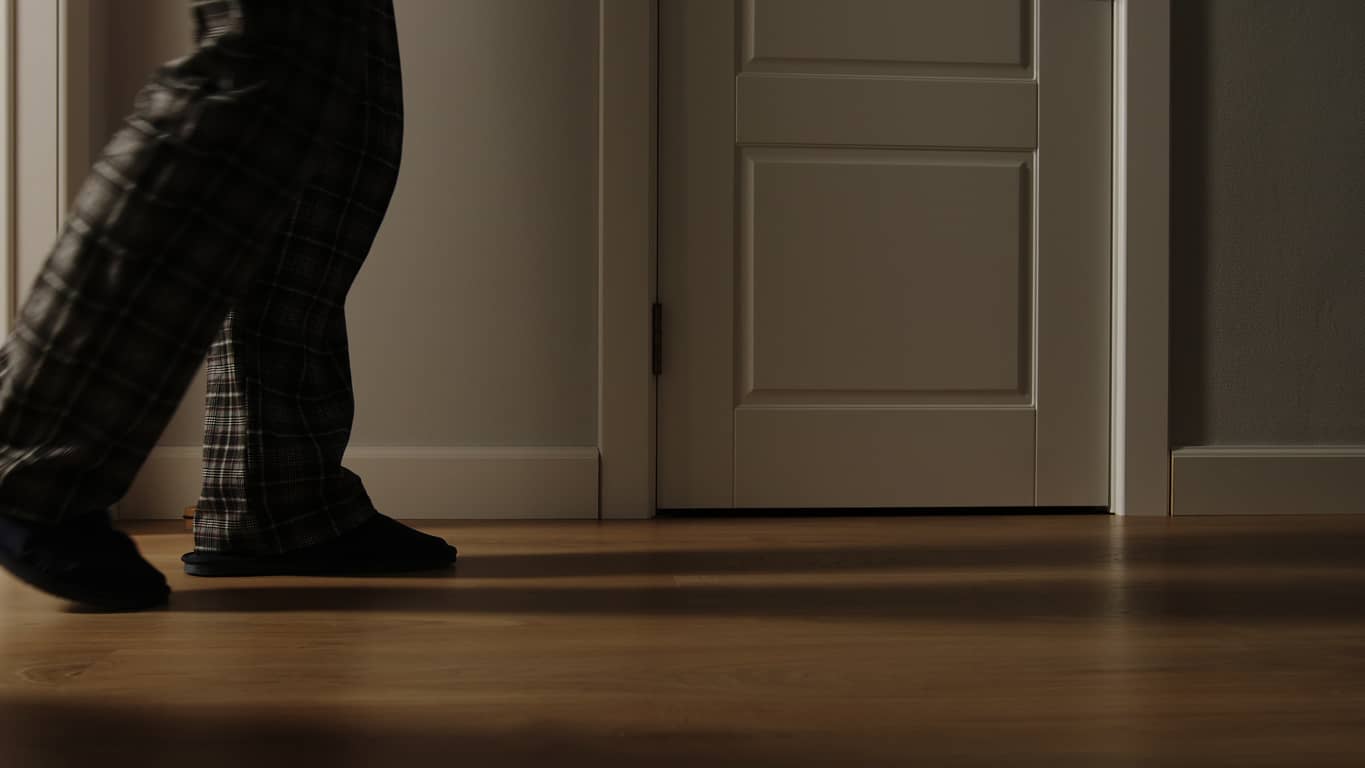What is restless legs syndrome?
Restless legs syndrome (RLS) is an unpleasant and frustrating condition that gives you an irresistible urge to move your limbs. Most of the time, it affects your legs, but it can affect your arms as well. It usually begins or gets worse when you’re inactive, resting or in bed at night, rather than happening when you’re up and about.
Sometimes known as Willis-Ekbom disease, RLS is a common condition – about 5% to 10% of people in the UK, US and Europe have it. And women are 2 times more likely to get it than men. It can develop at any point in your life, but it’s more common in middle age.
RLS can be a difficult condition to cope with. It can disturb your sleep, leaving you feeling tired and irritable, which may cause you to reach for sugar and caffeine to help you get through the day. But the good news is there are lots of things that you and your doctor can do to help treat it.
Read on to learn about what RLS feels like and what causes it, self-care measures that can help and when you should see a doctor for treatment.
What does restless legs syndrome feel like?
As well as the urge to move your legs, RLS symptoms can include uncomfortable feelings, which can happen in your arms, chest and face as well as your legs. These can include:
- tingling
- creeping
- crawling
- burning
- aching
- itching
- prickling
- throbbing
- pulling
- cramping
- pain
These feelings tend to happen more at night, but can also come on when you’re sitting or lying down. They can range from mild to severe, and can affect you every now and again or every day.
In most cases, the symptoms of RLS will disappear over time if you’re able to work out the cause and treat it. Unfortunately, if you don’t know what’s causing your RLS, it may get worse over time. RLS can also get worse as you get older.
But remember, whether your symptoms are mild or severe, there are things you and your doctor can do to reduce them and help you feel better.
What causes restless legs syndrome?
For most people, there’s no clear cause of RLS. But it could be due to:
- genetics – it’s thought that RLS can be passed on from your parents (hereditary). Between 40% and 90% of people with RLS have at least 1 parent, sibling or child with the condition
- pregnancy – about 20% of pregnant women get RLS symptoms in the final trimester. It's not clear why this happens, but it usually goes away after giving birth
- other medical conditions – certain conditions can be associated with RLS or make it worse, including iron deficiency anaemia, underactive thyroid (hypothyroidism), fibromyalgia, diabetes and Parkinson’s disease
- unbalanced dopamine levels – dopamine is a ‘feel-good’ chemical that’s released in your brain, and it also plays a role in controlling muscle movements. More evidence is needed, but researchers think a dopamine imbalance could cause RLS
What triggers restless legs syndrome?
The cause of RLS is often unclear, and different people will have different triggers. But experts think certain things may make it worse, including:
- lack of exercise
- being overweight or obese
- heavy smoking
- drinking too much caffeine or alcohol
- lack of sleep or other sleep conditions
- stress, anxiety or depression
- certain medications – including some antidepressants and antihistamines, and lithium and antipsychotics used to treat mental health conditions

At-home restless legs syndrome treatments
If you have mild RLS, self-care can often be an effective treatment. Things you can try yourself to prevent RLS, reduce symptoms and relieve episodes include:
- practising good sleep hygiene and habits
- exercising, walking and stretching regularly
- stopping smoking
- avoiding stimulants such as caffeine and alcohol as much as possible, and particularly in the evening
- having a warm bath in the evening before bed
- applying hot or cold compresses to your legs before bed, using a heat pad, hot flannel or cold pack. Try different temperatures and times to find out what works best for you
- trying relaxation techniques, such as breathing exercises or yoga
- massaging your legs (or arms) – using massage guns or wearable massagers may help
Change your habits
To help you get into a routine with self-care, try these tips:
- make easy swaps – replace drinks such as coffee and tea with caffeine-free options such as herbal tea, and alcoholic drinks for non-alcoholic alternatives
- use reminders – set alarms or notifications on your phone to remind you to stretch or massage your legs
- make plans – book in regular appointments with friends to go for a walk or work out

When to see a doctor – and how they can help
RLS isn’t life-threatening. But if it’s severe, it can really affect your quality of life, and lead to insomnia and extreme tiredness (fatigue). For some people, long-term sleep problems can be linked to other health conditions, including obesity, anxiety, depression and heart disease. So it’s important to get help when you need it.
You should see your doctor about RLS if:
- you think you have it and self-care methods you’ve tried aren’t helping
- you don’t know the cause or think you may have an underlying health condition
- your sleep is badly affected and you’re finding day-to-day life difficult or feeling extremely sleepy during the day
- you feel anxious or it’s affecting your mood
If you’re not sure whether you should see a doctor or you’re worried about any symptoms, try using our Smart Symptom Checker to help you work out what to do next.
How can restless legs syndrome be diagnosed?
There’s no specific test for RLS, but your doctor can usually make a diagnosis based on your symptoms. They can also check for other medical conditions that could be causing it.
It may be helpful to track your symptoms, so that you can share them with your doctor. For help doing this, download the Healthily app today.
For your doctor to diagnose RLS, you must have all of the following:
- An urge or desire to move your legs (or arms), usually with some of the uncomfortable feelings mentioned above.
- Symptoms that begin or get worse when resting.
- Symptoms that get better or go away after moving, stretching, walking or rubbing your legs.
- Symptoms that begin or are worse in the evening or at night.
- Confirmation that these symptoms aren’t caused by a separate medical or behavioural condition.
To find out if there’s something causing your RLS, your doctor will ask you lots of questions and take your medical history. They may also do:
- a physical examination, including a neurological exam
- blood tests
- sleep tests
Treatment from your doctor
If your RLS symptoms are severe, your doctor may be able to help with:
- treatment for underlying medical problems – if RLS is caused by an underlying condition, treatment should help to stop it. For example, they may suggest iron supplements if iron deficiency anaemia is causing RLS
- changing your medicines – if a certain medicine is causing RLS or making your symptoms worse, they may be able to prescribe something different
- dopamine agonists – as it’s thought that having low levels of dopamine could cause RLS, medications called dopamine agonists may be prescribed, which mimic the actions of dopamine to help reduce symptoms
- painkillers – if your RLS causes pain, they may prescribe a mild opiate-based painkiller, such as codeine
- neuropathic medications – medications such as gabapentin and pregabalin may be prescribed to help with pain and uncomfortable sensations
- sleep medications – these may be prescribed to help you sleep in the short-term
Make it easier!
If you need to take medication for RLS, keeping it next to your toothbrush in the bathroom, or next to your bedside lamp, may help you to remember to take it when getting ready for bed.
RLS can be a difficult and frustrating condition to live with, but there is help available. RLS-UK is a charity that can provide support, and you may also find it helpful to talk to other people who are affected.
Doctor’s tip
By Dr Adiele Hoffman, Healthily Clinical Content Reviewer
“Some patients tell me that they feel the symptoms of RLS coming on at times when they can’t just get up and move – during a flight or a work meeting, for example. One way to deal with this is to find something to distract you mentally. You could try playing a game on your phone, listening to a podcast, or using mindfulness to help focus your mind on a particular task.”







